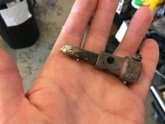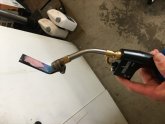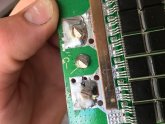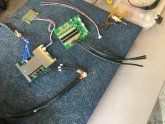Wow, 30 mosfets, that's a lot for 120 A.
They are
30 V 314 A 1.7 mOhms mosfets. Pretty high spec for a 120 A BMS but they aren't from a top tier manufacturer though. A quick search told me you can get them for 0.75 USD each by 100 quantity but you can bet the manufacturer in china can get them for a fraction of that.
My guess to why they used so many of them is to make the thermal management easier and/or account for pretty loose tolerances between each mosfets.
So yep, you can theorically pass a pretty high current (even double of the BMS rating if you want...) if you keep the fets cold enough but there's other things to account for: the PCB traces are decent but sooner or later they will act like a fuse, there's 2 mOhms current measuring shunt resistors and I have no idea about how much current they can handle (if you want to know you can measure them, deduce the package and use the specs of similar resistors), there's some protections (probably bidirectional TVS diodes, 10 of them in a row at the top) probably against the inductive voltage spike at turn-off and they can't handle an infinite amount of energy either (can't find anything with 1950 IEZ or 1EZ).








